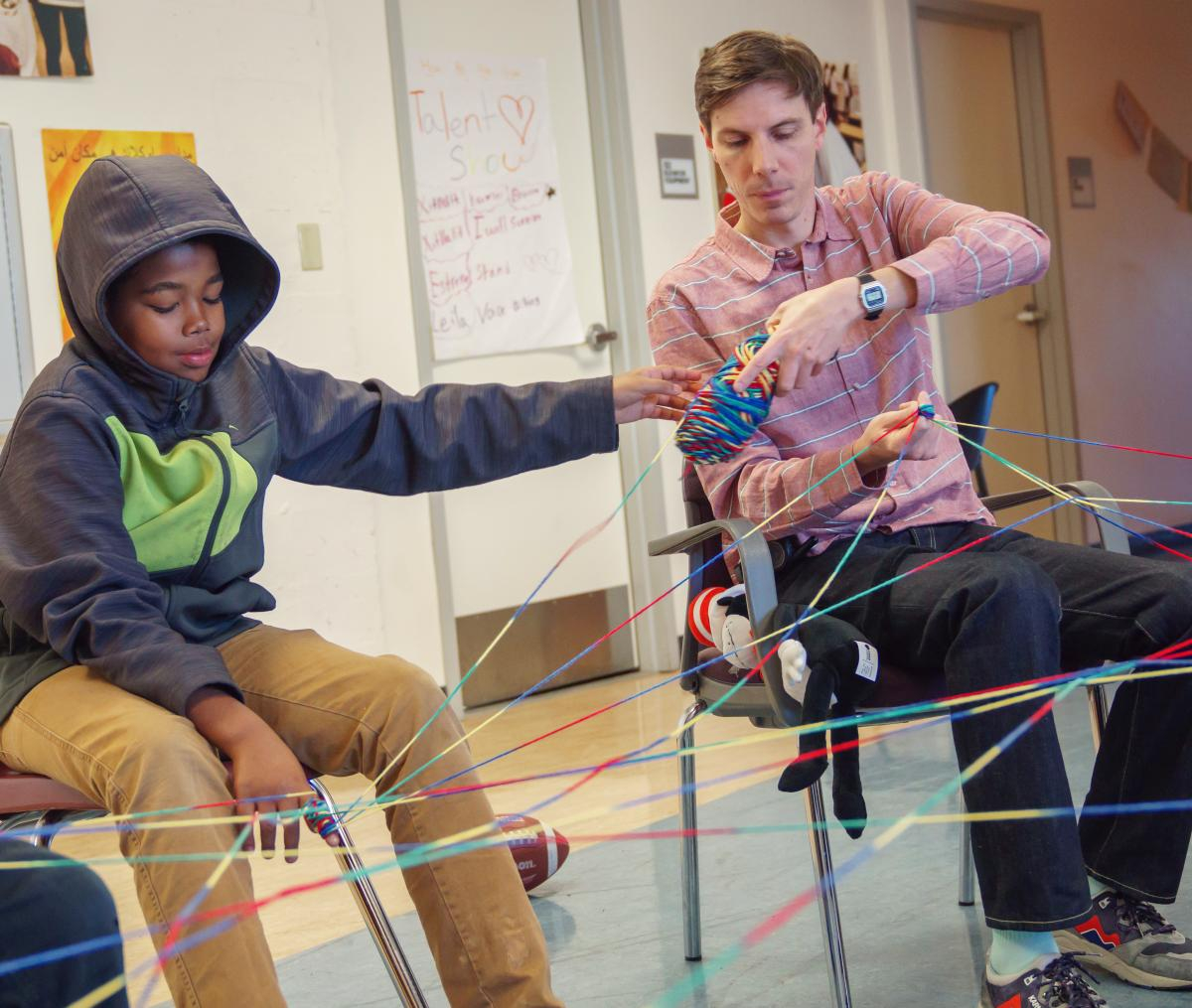Healing the Impact of Gun Violence
A restorative practitioner at a West Oakland (California) Middle School, Scott says the most important thing is giving students more power and voice. In this multi-cultural setting where all students are eligible for free or reduced lunch, Scott uses practices like community-building circles and cooperative games to make this happen.
He begins with a check-in and a “mindful moment,” so kids can focus in. Games help students speak their truth, from safe subjects like favorite colors to serious matters like family relationships. The key is finding the right topic — not so light that kids will “check out,” and not so heavy it opens wounds that can’t be addressed before they leave for the next class. It’s also about modeling behavior. “They soak up everything I say and do,” Scott explains. “So I show up every day in a consistent, loving, patient and thoughtful way and demonstrate how I want them to interact with each other.”
In a weekly boys group class, a student shared his experience witnessing a shooting. Scott models for the kids: if something strikes a chord with your own life, step up and share. This story struck a chord with everyone in class. Scott could tell they’d been carrying their stories with them, afraid to share them. The boys decided to record their experiences witnessing gun violence, interviewing each other using restorative questions. “It was amazing to see them react to each other’s stories and help each other out,” he says.
“We Had to Say No,” the project’s title, is from one of the interviews. The project website explains: “While brandishing a gun, the perpetrator asks our student and his younger brother, ‘Did y’all see anything?’ This moment epitomizes the terror and silence that surrounds it, for as our student recalls, he ‘had to say no.’ This project emphatically taught our students that it is okay to say ‘yes.’” Hear the boys’ stories at: www.ousd.org/Page/17852
